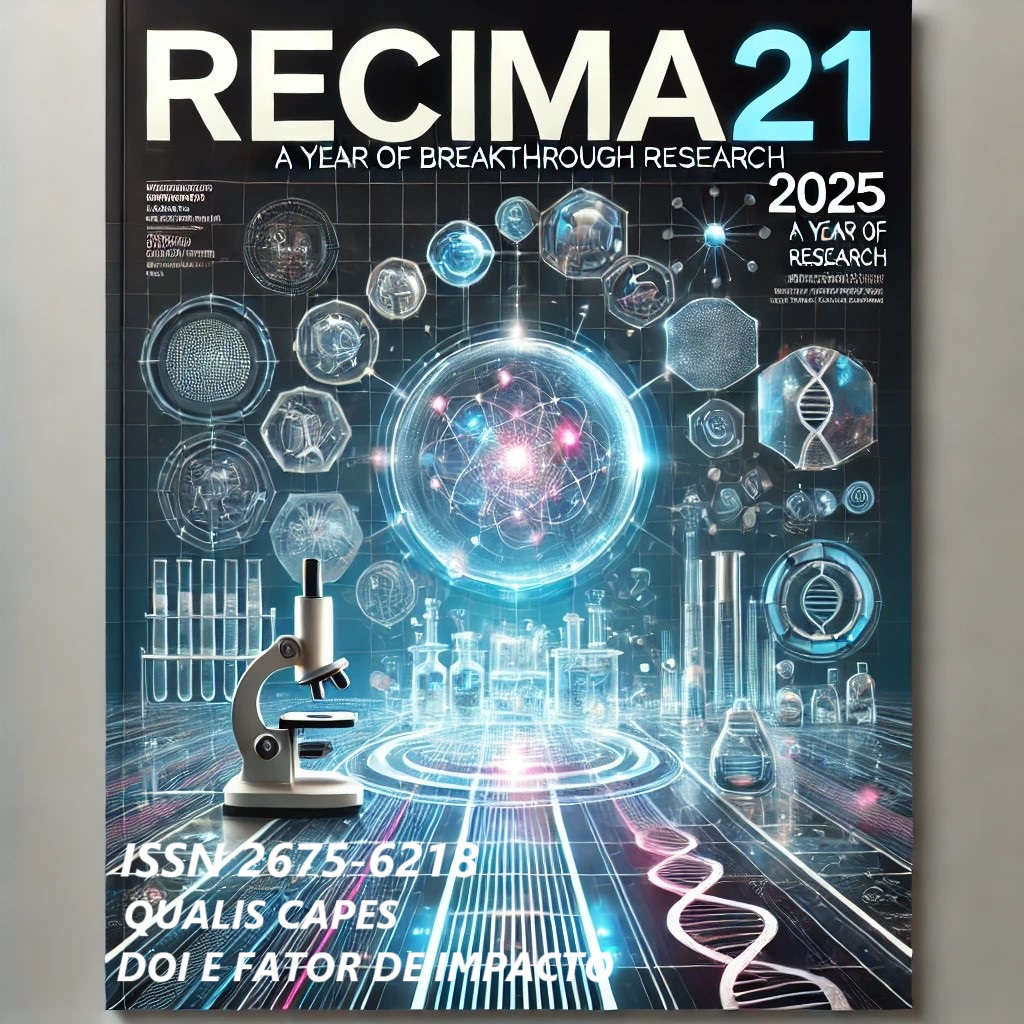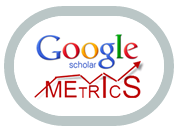CONSTRUÇÃO DE UM MODELO DE REDE NEURAL CONVOLUCIONAL PARA DETECÇÃO DE DOENÇAS PULMONARES EM IMAGENS DE RAIOS-X
DOI:
https://doi.org/10.47820/recima21.v6i10.6849Palavras-chave:
Doenças Pulmonares, Redes Neurais Convolucionais, Deep LearningResumo
Em 2019, infecções respiratórias inferiores impactaram cerca de 489 milhões de pessoas no mundo, sendo a pneumonia responsável por aproximadamente 4 milhões de mortes anuais, representando 7% do total de óbitos. Essa doença é uma das principais causas de mortalidade global, com maior impacto em países em desenvolvimento, especialmente entre crianças menores de 5 anos e idosos acima de 70 anos. O diagnóstico de doenças pulmonares frequentemente utiliza radiografias torácicas, que revelam a gravidade por meio de opacidades pulmonares e acúmulo de líquido pleural. Este estudo desenvolveu um modelo baseado em Redes Neurais Convolucionais (CNN) para detectar automaticamente patologias pulmonares em imagens de raios-X. O modelo obteve uma acurácia superior a 80%, com a matriz de confusão indicando 91,8% de precisão para casos sem alterações e 69,5% para casos patológicos. A solução foi integrada a uma aplicação web para classificação de imagens radiográficas.
Downloads
Referências
CHICCO, D.; JURMAN, G. The advantages of the Matthews correlation coefficient (MCC) over F1 score and accuracy in binary classification evaluation. BMC Genomics, v. 21, n. 1, p. 6, 2020. DOI: https://doi.org/10.1186/s12864-019-6413-7
DETTMERS, T. Deep learning in a nutshell: Core concepts. NVIDIA Developer Blog, 2015. Disponível em: https://devblogs.nvidia.com/deep-learning-nutshell-core-concepts. Acesso em: 2 maio 2019.
DOSOVITSKIY, A. et al. An Image is Worth 16x16 Words: Transformers for Image Recognition at Scale. ICLR, 2021.
FATI, S. M.; SENAN, E. M.; ELHAKIM, N. Deep and hybrid learning technique for early detection of tuberculosis based on X-ray images using feature fusion. Applied Sciences, v. 12, n. 14, p. 7092, 2022. DOI: https://doi.org/10.3390/app12147092
FAWCETT, T. An introduction to ROC analysis. Pattern Recognition Letters, v. 27, n. 8, p. 861–874, 2006. DOI: https://doi.org/10.1016/j.patrec.2005.10.010
GOODFELLOW, I.; BENGIO, Y.; COURVILLE, A. Deep learning. [S. l.]: MIT Press, 2017.
HAYKIN, S. Neural networks: A comprehensive foundation. 2nd ed. [S. l.]: Prentice Hall, 2000.
JAHAN, N.; ANOWER, M. S.; HASSAN, R. Automated diagnosis of pneumonia from classification of chest x-ray im ages using efficientnet. In: 2021 International Conference on Information and Communication Technology for Sustainable Development (ICICT4SD). February 2021. p. 235-239. DOI: https://doi.org/10.1109/ICICT4SD50815.2021.9397055
JAIN, S.; SELF, W. H.; WUNDERINK, R. G.; FAKHRAN, S.; BALK, R.; BRAMLEY, A. M.; GRIJALVA, C. G. Community-acquired pneumonia requiring hospitalization among U.S. adults. New England Journal of Medicine, v. 373, n. 5, p. 415-427, 2015. doi: 10.1056/NEJMoa1500245. DOI: https://doi.org/10.1056/NEJMoa1500245
KHAN, M. A.; KADRY, S.; ZHANG, Y. D.; AKRAM, T.; SHARIF, M.; REHMAN, A.; SABA, T. Prediction of COVID-19-pneumonia based on selected deep features and one class kernel extreme learning machine. Computers & Electrical Engineering, v. 90, p. 106960, 2021. DOI: https://doi.org/10.1016/j.compeleceng.2020.106960
KOMIYA, K.; ISHII, H.; KADOTA, J. Healthcare-associated pneumonia and aspiration pneumonia. Respiration, v. 92, n. 5, p. 307-317, 2016. doi: 10.1159/000449102 DOI: https://doi.org/10.1159/000449102
KONG, L.; CHENG, J. Based on improved deep convolutional neural network model pneumonia image classification. PloS one, v. 16, n. 11, e0258804, 2021. DOI: https://doi.org/10.1371/journal.pone.0258804
KRIZHEVSKY, A.; SUTSKEVER, I.; HINTON, G. E. ImageNet classification with deep convolutional neural networks. Advances in Neural Information Processing Systems, p. 1-9, 2012.
LEE, S.; CHO, H.R.; YOO, J. S.; KIM, Y.U. The prognostic value of median nerve thickness in diagnosing carpal tunnel syndrome using magnetic resonance imaging: a pilot study. Korean Journal of Pain, v. 33, p. 54–59, 2020. doi: 10.3344/kjp.2020.33.1.54. DOI: https://doi.org/10.3344/kjp.2020.33.1.54
LIANG, G.; ZHENG, L. A transfer learning method with deep residual network for pediatric pneumonia diagnosis. Computer methods and programs in biomedicine, v. 187, 104964, 2020. DOI: https://doi.org/10.1016/j.cmpb.2019.06.023
LUNDERVOLD, A. S.; LUNDERVOLD, A. An overview of deep learning in medical imaging focusing on MRI. Zeitschrift für Medizinische Physik, v. 29, n. 2, p. 102–127, 2019. DOI: https://doi.org/10.1016/j.zemedi.2018.11.002
LUSTED, L. B. Signal detectability and medical decision-making. Science, v. 171, p. 1217–1219, 1971. doi: 10.1126/science.171.3977.1217. DOI: https://doi.org/10.1126/science.171.3977.1217
MEHRYAR MOHRI, A.; TALWALKAR, A. Foundations of machine learning. [S. l.: s. n.], 2012.
MENDES, D. et al. Deep learning book. [S. l.: s. n.], 2023. Disponível em: http://deeplearningbook.com.br/o-que-sao-redes-neurais-artificiais-profundas/
METERSKY, M. L.; MASTERTON, R. G.; LODE, H.; FILE, T. M. Hospital-acquired pneumonia in adults: diagnosis, assessment of severity, initial antimicrobial therapy, and preventative strategies. A consensus document. American Journal of Respiratory and Critical Care Medicine, v. 196, n. 10, p. 1336-1344, 2017. doi: 10.1164/rccm.201710-2080ST.
METZ, C. E. Basic principles of ROC analysis. In: Seminars in nuclear medicine, v. 8, n. 4, p. 283-298, October 1978. DOI: https://doi.org/10.1016/S0001-2998(78)80014-2
NAHM, F. S. Receiver Operating Characteristic Curve: Overview and Practical Use for Clinicians. Korean Journal of Anesthesiology, v. 75, p. 25–36, 2022. Disponível em: https://doi.org/10.4097/kja.21209. Acesso em: 16 out. 2025. DOI: https://doi.org/10.4097/kja.21209
NAZ, J.; KHAN, M. A.; ALHAISONI, M.; TARIQ, U.; KADRY, S. Segmentation and Classification of Stomach Abnormalities Using Deep Learning. Computers, Materials & Continua, v. 69, n. 1, 2021. DOI: https://doi.org/10.32604/cmc.2021.017101
RAHMAN, T.; KHANDAKAR, A.; KADIR, M. A.; ISLAM, K. R.; ISLAM, K. F.; MAZHAR, R.; CHOWDHURY, M. E. Reliable tuberculosis detection using chest X-ray with deep learning, segmentation and visualization. Ieee Access, v. 8, p. 191586-191601, 2020. DOI: https://doi.org/10.1109/ACCESS.2020.3031384
RAJPURKAR, P. et al. CheXNet: Radiologist-Level Pneumonia Detection on Chest X-Rays with Deep Learning. arXiv preprint, arXiv:1711.05225, 2017.
RASCHKA, S.; MIRJALILI, V. Python machine learning: Machine learning and deep learning with Python, scikit-learn, and Tensor Flow. 2nd ed. [S. l.]: Packt Publishing Ltd, 2017.
RUMELHART, D. E.; HINTON, G. E.; WILLIAMS, R. J. Learning internal representations by error propagation. [S. l.: s. n.], 1985. DOI: https://doi.org/10.21236/ADA164453
SANTANA, M. Deep learning: Do conceito às aplicações. Data Hackers, 2019. Disponível em: https://medium.com/datahackers/deeplearningdoconceito%c3%a0saplica%c3%a7%c3%b5es-e8e91a7c7eaf
SATHITRATANACHEEWIN, S.; SUNANTA, P.; PONGPIRUL, K. Deep learning for automated classification of tuberculosis-related chest X-Ray: dataset distribution shift limits diagnostic performance generalizability. Heliyon, v. 6, n. 8, 2020. DOI: https://doi.org/10.1016/j.heliyon.2020.e04614
SHARMA, S.; GUPTA, S.; GUPTA, D.; RASHID, J.; JUNEJA, S.; KIM, J.; ELARABAWY, M. M. Performance evaluation of the deep learning based convolutional neural network approach for the recognition of chest X-ray images. Frontiers in oncology, v. 12, p. 932496, 2022. DOI: https://doi.org/10.3389/fonc.2022.932496
SPÖRL, C.; CASTRO, E.; LUCHIARI, A. Aplicação de redes neurais artificiais na construção de modelos de fragilidade ambiental. Revista do Departamento de Geografia, v. 21, p. 113-135, 2011. DOI: https://doi.org/10.7154/RDG.2011.0021.0006
SWAPNAREKHA, H.; BEHERA, H. S.; ROY, D.; DAS, S.; NAYAK, J. Competitive deep learning methods for COVID-19 detection using X-ray images. Journal of The Institution of Engineers (India): Series B, v. 102, n. 6, p. 1177-1190, 2021. DOI: https://doi.org/10.1007/s40031-021-00589-3
TAN M.; LE, Q. EfficientNet: Rethinking Model Scaling for Convolutional Neural Networks. ICML, 2019.
TANNER JR, W. P.; SWETS, J. A. A decision-making theory of visual detection. Psychological Review, v. 61, p. 401–409, 1954. doi: 10.1037/h0058700. DOI: https://doi.org/10.1037/h0058700
TRIPATHI, A.; SINGH, T.; NAIR, R. R. Optimal pneumonia detection using convolutional neural networks from x-ray images. In: 2021 12th International Conference on Computing Communication and Networking Technologies (ICCCNT). July 2021. p. 1-6. DOI: https://doi.org/10.1109/ICCCNT51525.2021.9580140
VOS, Theo et al. Global burden of 369 diseases and injuries in 204 countries and territories, 1990-2019: a systematic analysis for the Global Burden of Disease Study 2019. The Lancet, v. 396, n. 10258, p. 1204-1222, 2020. doi: 10.1016/S0140-6736(20)30925-9 DOI: https://doi.org/10.1016/S0140-6736(20)30925-9
WERBOS, P. Beyond regression: New tools for prediction and analysis in the behavioral sciences. Thesis (PhD) - Committee on Applied Mathematics, Harvard University, Cambridge, MA, 1974.
Downloads
Publicado
Licença
Copyright (c) 2025 RECIMA21 - Revista Científica Multidisciplinar - ISSN 2675-6218

Este trabalho está licenciado sob uma licença Creative Commons Attribution 4.0 International License.
Os direitos autorais dos artigos/resenhas/TCCs publicados pertecem à revista RECIMA21, e seguem o padrão Creative Commons (CC BY 4.0), permitindo a cópia ou reprodução, desde que cite a fonte e respeite os direitos dos autores e contenham menção aos mesmos nos créditos. Toda e qualquer obra publicada na revista, seu conteúdo é de responsabilidade dos autores, cabendo a RECIMA21 apenas ser o veículo de divulgação, seguindo os padrões nacionais e internacionais de publicação.













